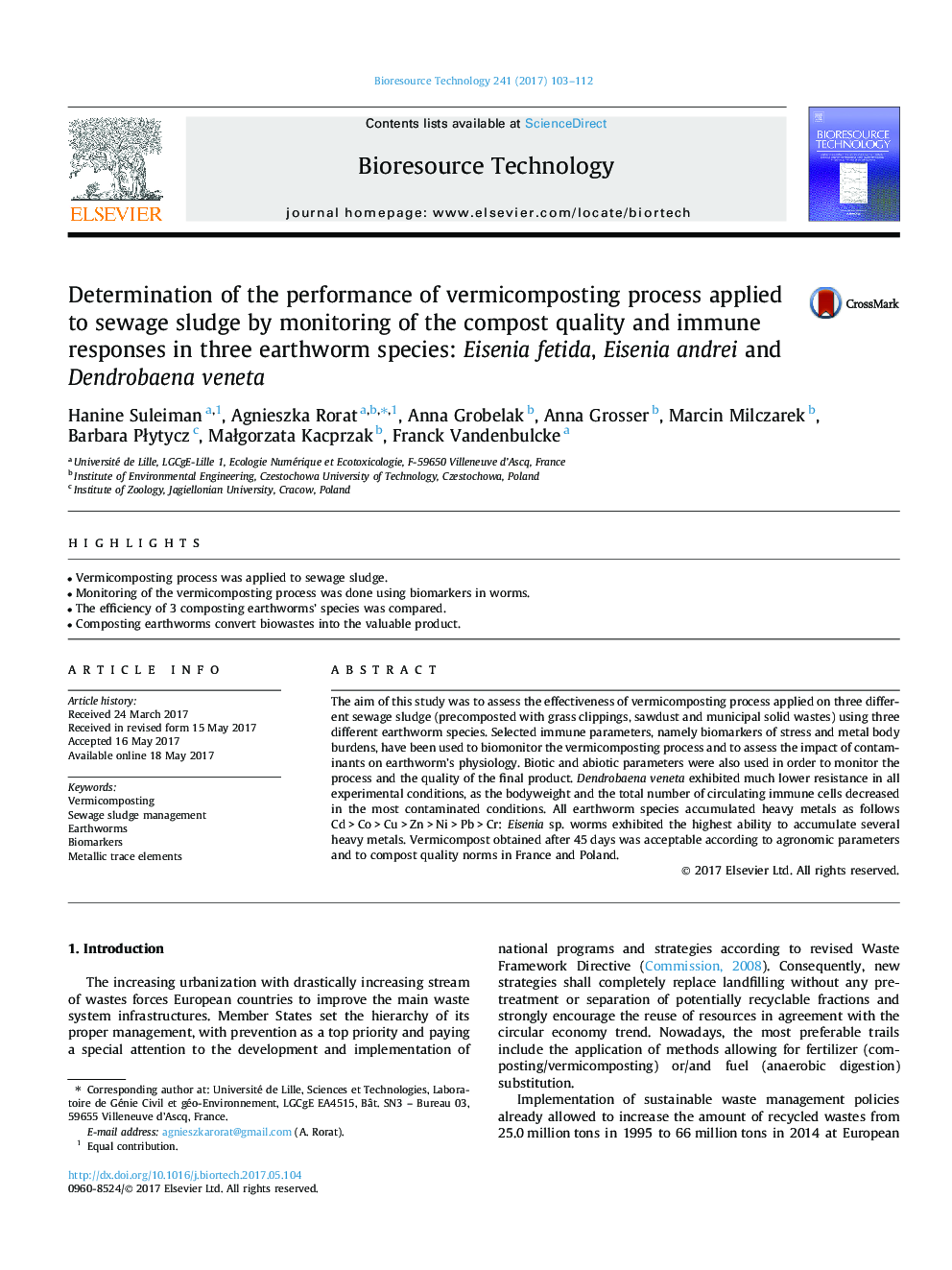| Article ID | Journal | Published Year | Pages | File Type |
|---|---|---|---|---|
| 4997073 | Bioresource Technology | 2017 | 10 Pages |
â¢Vermicomposting process was applied to sewage sludge.â¢Monitoring of the vermicomposting process was done using biomarkers in worms.â¢The efficiency of 3 composting earthworms' species was compared.â¢Composting earthworms convert biowastes into the valuable product.
The aim of this study was to assess the effectiveness of vermicomposting process applied on three different sewage sludge (precomposted with grass clippings, sawdust and municipal solid wastes) using three different earthworm species. Selected immune parameters, namely biomarkers of stress and metal body burdens, have been used to biomonitor the vermicomposting process and to assess the impact of contaminants on earthworm's physiology. Biotic and abiotic parameters were also used in order to monitor the process and the quality of the final product. Dendrobaena veneta exhibited much lower resistance in all experimental conditions, as the bodyweight and the total number of circulating immune cells decreased in the most contaminated conditions. All earthworm species accumulated heavy metals as follows Cd > Co > Cu > Zn > Ni > Pb > Cr: Eisenia sp. worms exhibited the highest ability to accumulate several heavy metals. Vermicompost obtained after 45 days was acceptable according to agronomic parameters and to compost quality norms in France and Poland.
